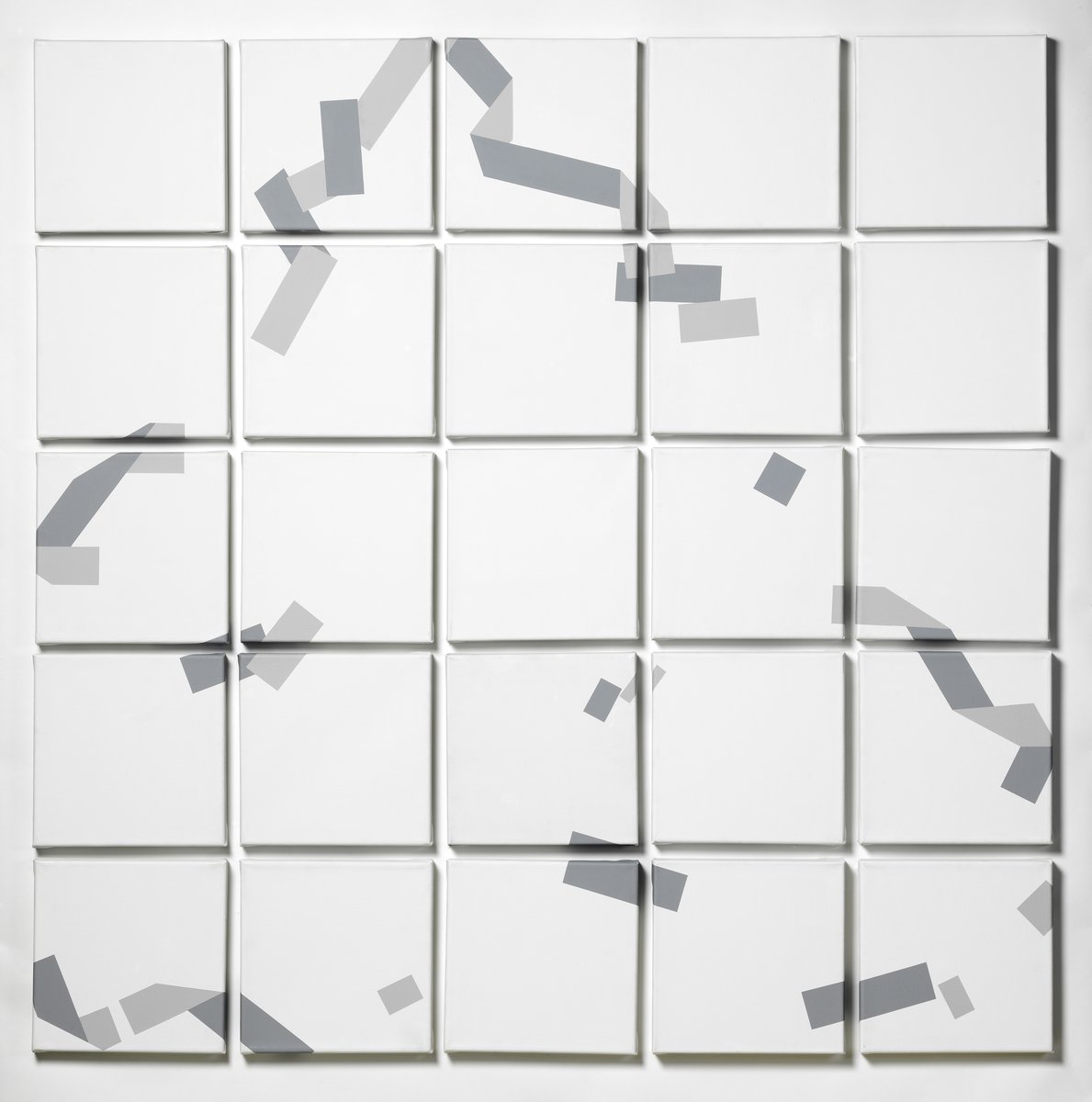
Montagne Sainte-Victoire Divided into Twenty-Five Squares
Department of Art after 1800
| Artist | |
|---|---|
| Culture | French |
| Date | 1868 |
| Object type | painting |
| Medium, technique | oil on canvas |
| Dimensions | 69 x 89 cm |
| Inventory number | 438.B |
| Collection | Department of Art after 1800 |
| On view | This artwork is not on display |
On the occasion of the monographic exhibition of Alexandre Hollan (Hollán Sándor) in the Museum of Fine Arts in 2011, Péter Nádas (1942–), one of the greatest living Hungarian writer, expressed the following about this preeminent landscape painter of Hungarian descent, the portraitist of the trees in Languedoc province: ‘After Jung … it could be said that the collective subconscious can only be reflected upon individually, no collective road leads to it. In other words, the gesture of progress must be made by individuals’. In a letter dated 17 October
1868 Gustave Courbet wrote the following to Jules Castagnary (1830–1888) from Ornans: ‘In this moment, it looks like France wants to reestablish the spirit of lost art. Why? Because it has this idea of enthusiasm and the freedom to establish’.
Castagnary, who had recognised Courbet’s genius early on, made important observations about each genre in the catalogue of the École des Beaux-Arts published on the occasion of the first retrospective exhibition (1882) after the master’s death, and even discussed each type of Courbet’s landscape painting, connecting the realist landscape depiction rooted in the Fontainebleau and Barbizon traditions with the symbolist attitudes of the late-nineteenth-century as well as with the prevailing aspirations to build constructions. In some landscape pictures he drew a parallel between forests and the vast interiors of cathedrals, and likened the massive trunks of trees to pillars supporting the vaults.
Courbet painted the Budapest picture titled Cedar Tree at Hauteville during one of his trips to Ornans in 1868. Its former dating to 1874, published in the oeuvre catalogue compiled by Robert Fernier, was changed to 1868 by Stephani Poley in 1978 based on the painting’s style and biographical data. Indeed, the painter spent the autumn months of 1868 in Ornans, his native town, and paid several visits to the family of a physician friend, who lived nearby. Hauteville is situated not
far from Ornans, in the scenic Jura Mountains, with one of its beautiful ranges offering a vista onto the mountains in the distance. The cult of hiking that emerged in the nineteenth century appears in Courbet’s picture for example by the bench installed by the municipality for hikers to take a rest and enjoy the panorama opening onto the hilly surroundings.The huge cedar tree rises up next to the bench. Both the empty bench and the lonely cedar allude to the eternal loneliness of man. Jane Austen’s heroine, Emma, must have felt so alone on her Box Hill trip, where her only companions were her bitter thoughts.
Courbet’s art points beyond nineteenth-century romanticism and this masterpiece from 1868 also brings an absolute painterly solution anticipating the twentieth century. Later on, Courbet’s paintings of forests and trees in Eastern France paved the way – through the mediation of Paul Cézanne – for the compositional solutions of modernism and mostly constructivism, serving as a source for the structures that can primarily be seen in Piet Mondrian’s drawings and paintings.
Judit Geskó
Múzeumi Kalauz: Magyar Nemzeti Galéria, A Magyar Nemzeti Galéria kiadványai, Szépművészeti Múzeum – Magyar Nemzeti Galéria, Budapest, 2018, p. 233.
Treasures from Budapest : European and Hungarian masterpieces from the Museum of Fine Arts, Budapest and the Hungarian National Gallery: Japan-Hungary friendship 150th anniversary: Exhibition at the National Arts Centre, Tokyo, on the 150th anniversary of the Japanese-Hungarian friendship 2019.12.04 – 2020.03.16., Nikkei Inc, Tokyo, 2019.
Bätschmann, Oskar – Causey, Faya – van Faassen, Sjoerd – Forgács, Éva – Janssen, Hans – Lebensztejn, Jean-Claude – Tompkins Lewis, Mary – Ozerkov, Dmitrij – Ruppen, Fabienne – Shiff, Richard – Smith, Paul – Bodor, Kata – Fehér, Dávid – Gergely, Mariann – Geskó, Judit – Gonda, Zsuzsa – Kovács, Anna Zsófia – Orosz, Márton – Somodi, Anett – Szeredi, Merse Pál – Tóth, Ferenc – Warman, Jayne, Geskó, Judit (ed.), Cezanne-tól Malevicsig: Árkádiától az absztrakcióig, Szépművészeti Múzeum, Budapest, 2021, p. 192-193., no. 10.
Mácsay, Kriszta – Gimesy, Péter, 19. század, Korszakok a múzeumban, Szépművészeti Múzeum, Budapest, 2023, p. 32-35.
This record is subject to revision due to ongoing research.